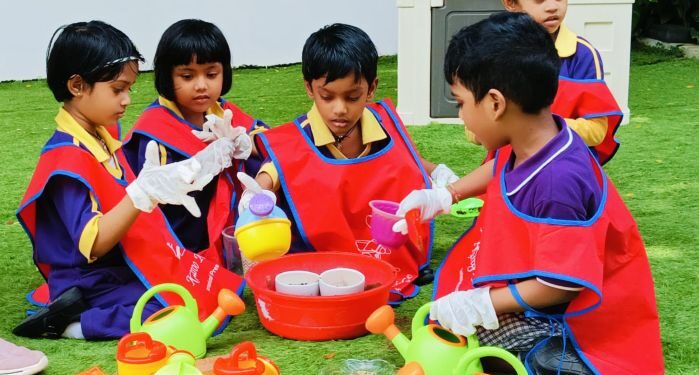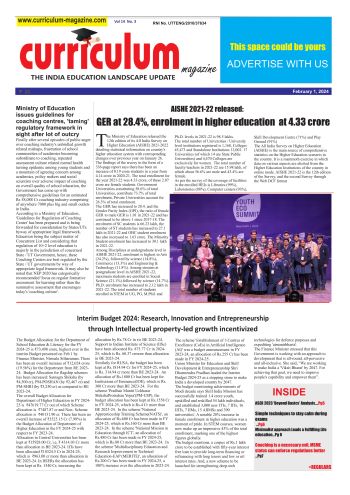By Sibi Fakih -Lead Curriculum Development, Kangaroo Kids Preschools
Preschools play a vital role in nurturing a child’s ability to express thoughts, feelings, and ideas with coherence and confidence. In today’s world, the ability to express oneself effectively is not just a communication skill—it’s a critical life skill essential for long-term success. Research in child psychology underscores that early childhood, especially the first five years, is a crucial period for brain development. During this phase, rich, interactive, and expressive experiences in preschool can significantly contribute to the formation of neural connections that support language development, emotional understanding, and social interaction.
A strong foundation in communication established in early childhood promotes academic growth, emotional wellbeing, and social competence. A well-designed preschool program, supported by a thoughtfully crafted curriculum, provides the ideal learning environment for children to develop these essential expressive abilities.
Why This Matters for the Road Ahead
Early exposure to expressive experiences shapes not just how a child communicates, but how they think, connect, and lead. Studies consistently show that children who participate in expressive preschool environments demonstrate:
- Stronger language and literacy skills
- Improved social interactions and empathy
- Greater emotional maturity and self-awareness
As these children grow, the expressive skills they develop in their early years lay the groundwork for academic achievement, meaningful relationships, and effective leadership. Expressiveness is not an innate trait limited to a few—it’s a skill that can be nurtured in every child. Through conversation, play, art, music, and emotional engagement, preschools can become spaces where young learners find and refine their voices.
When children are given opportunities to express themselves, they grow into adults who can speak with clarity, listen with empathy, and act with conviction.
Teaching Expression to Preschoolers
Expression is a multidimensional skill that includes:
- Verbal articulation: Using words to describe ideas, express needs, and communicate feelings
- Non-verbal communication: Utilizing facial expressions, gestures, and body language
- Emotional literacy: Identifying, naming, and managing emotions
Children are naturally adept at picking up social cues and understanding social language. They quickly learn the nuances of turn-taking, active listening, and adjusting their communication to different contexts. Many also display creative expression through storytelling, music, art, and movement. When these elements are incorporated into the preschool environment, children become more engaged and confident communicators.
Making Preschoolers Expressive
To support expressive development, preschools must begin early and offer a variety of activities across formats. Some effective approaches include:
- Storytelling and dramatic play: These sessions help children structure thoughts, use gestures, and grasp dialogue. With encouragement, even shy children can become confident narrators, gaining fluency and rhythm in speech.
- Creative pursuits (art, music, movement): These allow introverted children to express complex emotions in non-verbal yet deeply meaningful ways. A detailed drawing or expressive dance can sometimes convey more than words.
- Role-based play: Pretending to be a doctor, shopkeeper, or teacher helps children understand social roles and situational communication. These scenarios encourage vocabulary growth and teach skills like asking and responding to questions, persuading, and comforting.
- Emotional support and guidance: Teachers can help children express true feelings rather than withdrawing. This builds emotional clarity and supports the development of empathy and healthy conflict resolution.
The Educator’s Role: Enabling Expressive Environments
Educators are more than instructors—they are facilitators of expression. Through thoughtful communication and gentle scaffolding, teachers help boost children’s confidence and clarity.
- They honor diverse backgrounds, languages, and traditions, helping every child feel seen and heard.
- They encourage open-ended dialogue with questions like “What do you think happens next?” to inspire curiosity and critical thinking.
- Instead of correcting a child’s language, they model and expand vocabulary, introducing new words and structures in context.
- They validate and build on children’s ideas, fostering a safe, inclusive, and expressive learning environment.
By creating these environments, educators bring in linguistic and cultural diversity, supporting each child’s unique expressive journey.













